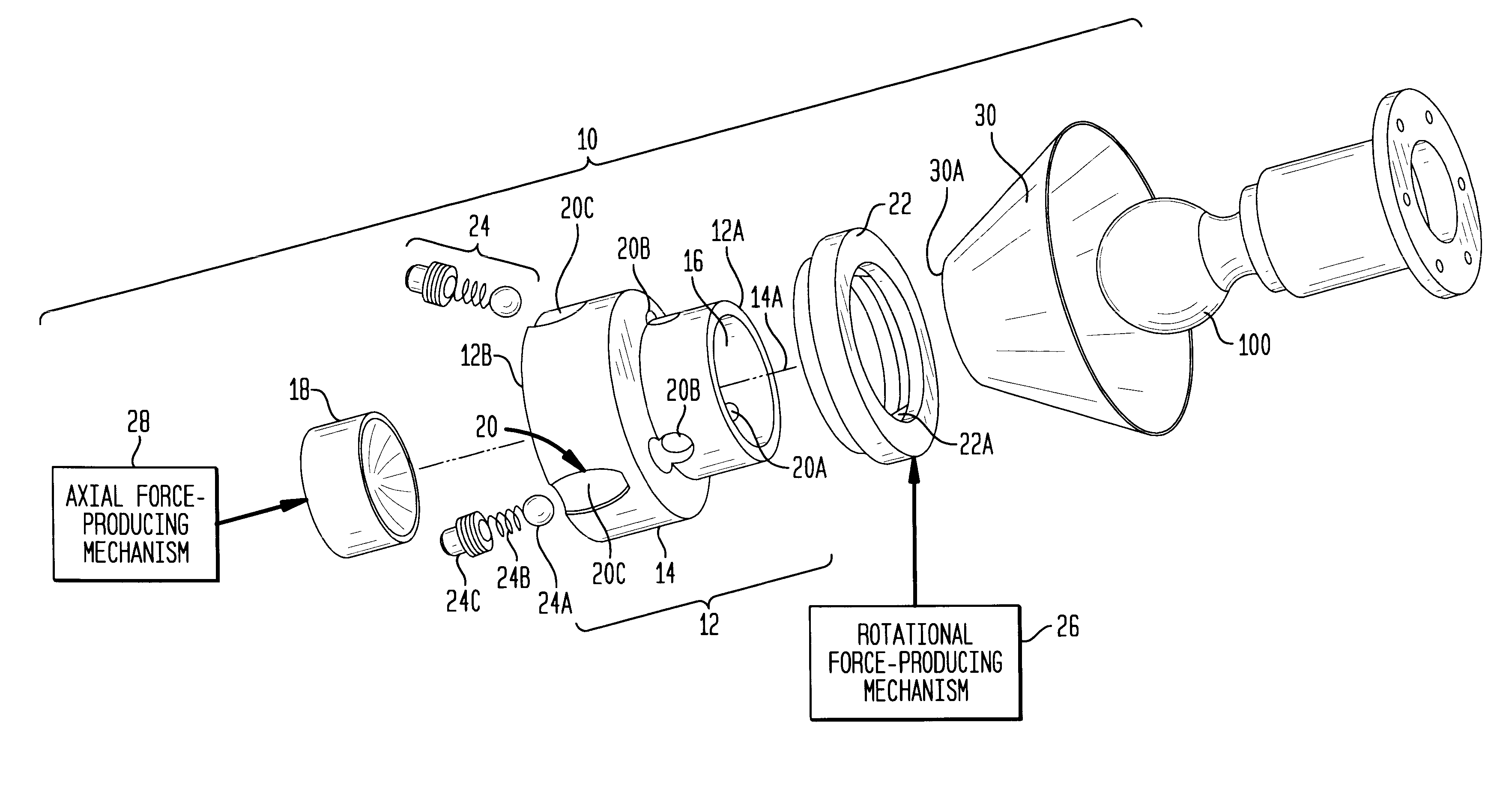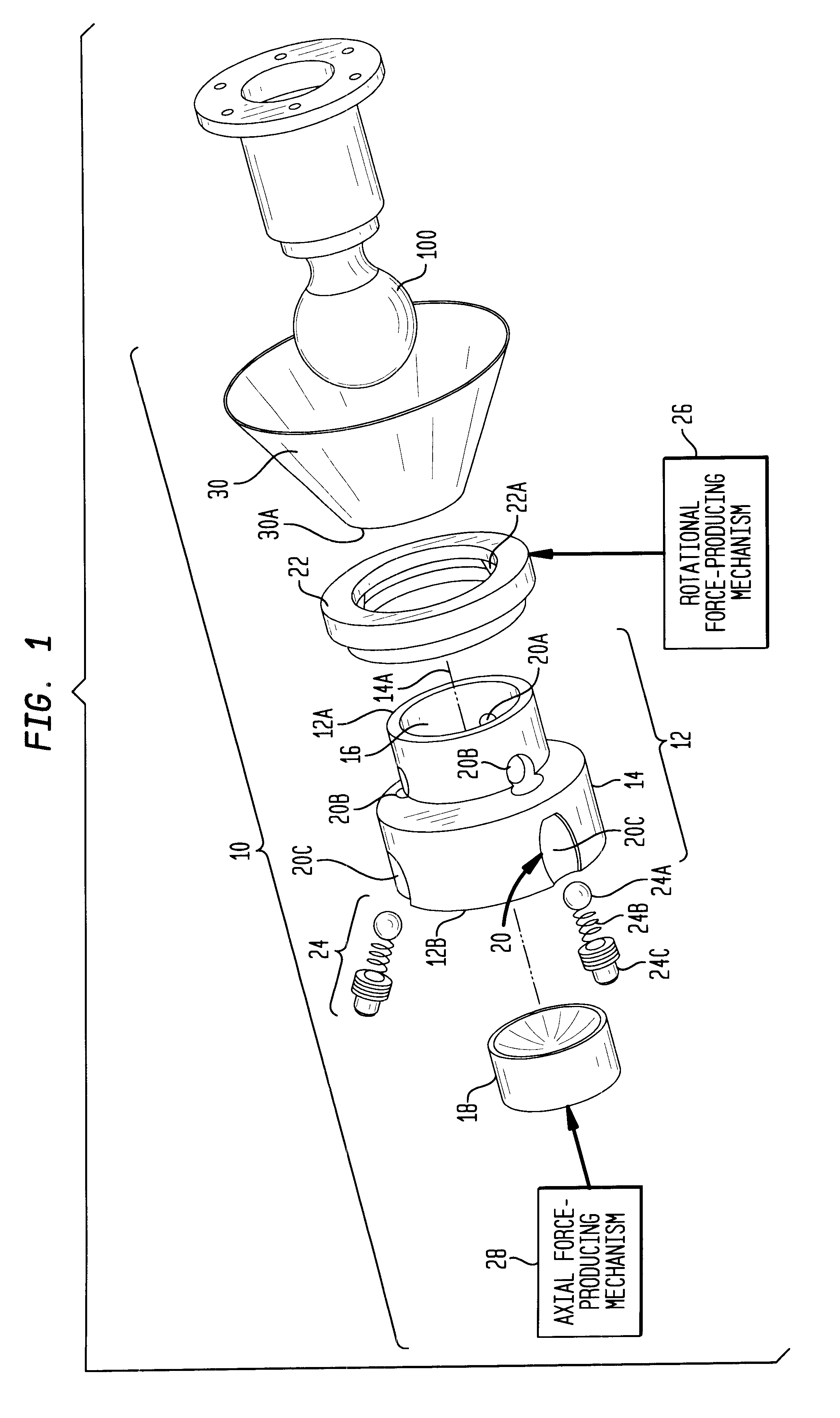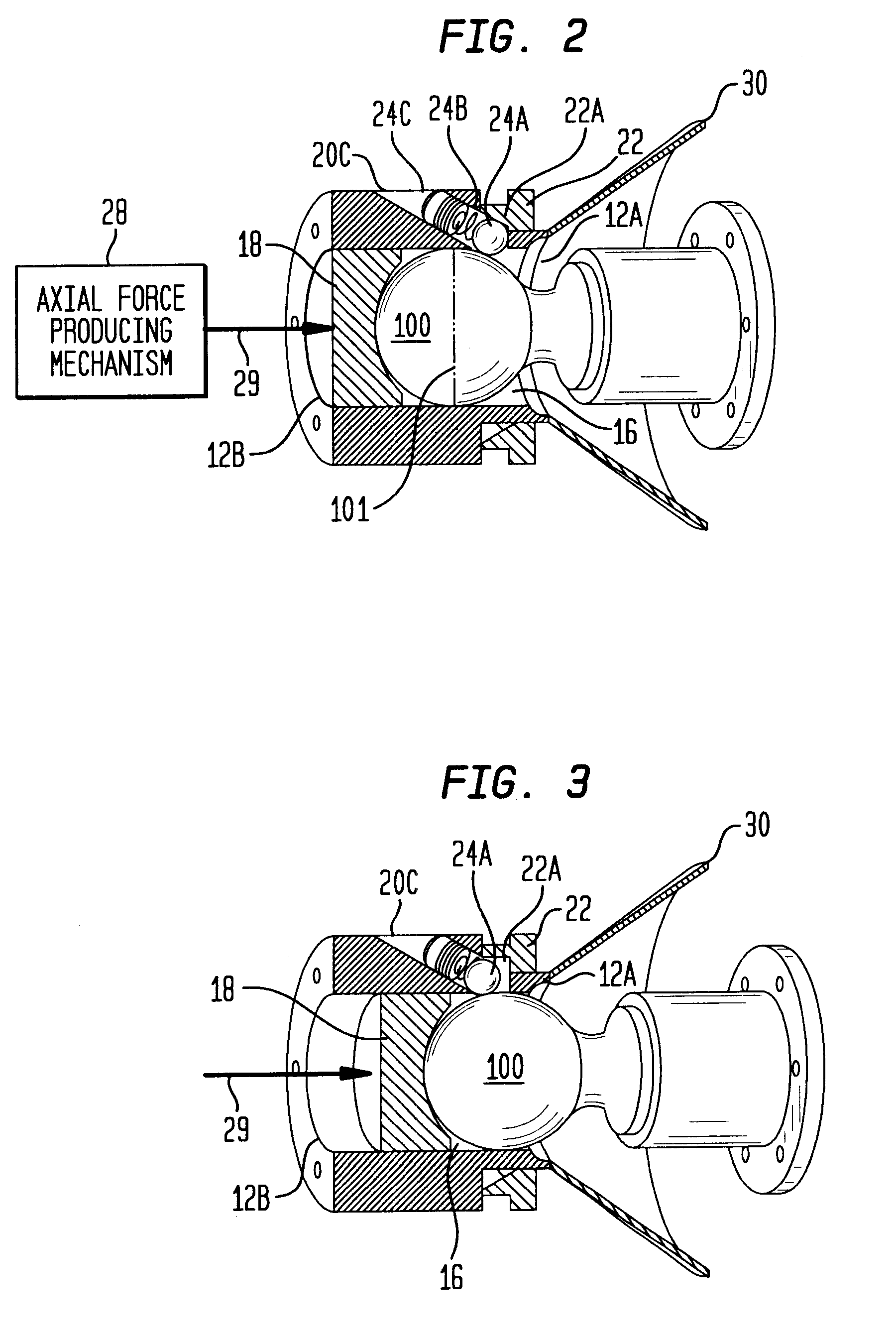Passive ball capture joint
a ball capture and ball joint technology, applied in the direction of packaging, manufacturing tools, couplings, etc., can solve the problems of low cost and very low strength in the axial direction of ball joints, joints are not generally considered useful as passive capture, and do not lend themselves
- Summary
- Abstract
- Description
- Claims
- Application Information
AI Technical Summary
Benefits of technology
Problems solved by technology
Method used
Image
Examples
Embodiment Construction
)
Referring now to the drawings, and more particularly to FIG. 1, an exploded view of a passive ball capture joint in accordance with the present invention is shown and referenced generally by reference numeral 10. Ball capture joint 10 is designed to passively capture and lock onto a joint ball 100, the particular design of which is not a limitation of the present invention. Further, ball capture joint 10 can be selectively unlocked and simultaneously eject joint ball 100.
In general, ball capture joint 10 includes a socket assembly, a lock / unlock ring coupled to the socket assembly, and a rigidizing / ejection assembly. More specifically, the socket assembly includes an open-ended sleeve 12 defined by a base 14 having an exterior wall forming a chamber 16 having an interior wall. Chamber 16 is sized to receive joint ball 100 therein via open end 12A of sleeve 12. A ball receiving load / eject cup 18 is sized to slide within chamber 16 via an axial force applied thereto at open end 12B a...
PUM
 Login to View More
Login to View More Abstract
Description
Claims
Application Information
 Login to View More
Login to View More - R&D
- Intellectual Property
- Life Sciences
- Materials
- Tech Scout
- Unparalleled Data Quality
- Higher Quality Content
- 60% Fewer Hallucinations
Browse by: Latest US Patents, China's latest patents, Technical Efficacy Thesaurus, Application Domain, Technology Topic, Popular Technical Reports.
© 2025 PatSnap. All rights reserved.Legal|Privacy policy|Modern Slavery Act Transparency Statement|Sitemap|About US| Contact US: help@patsnap.com



